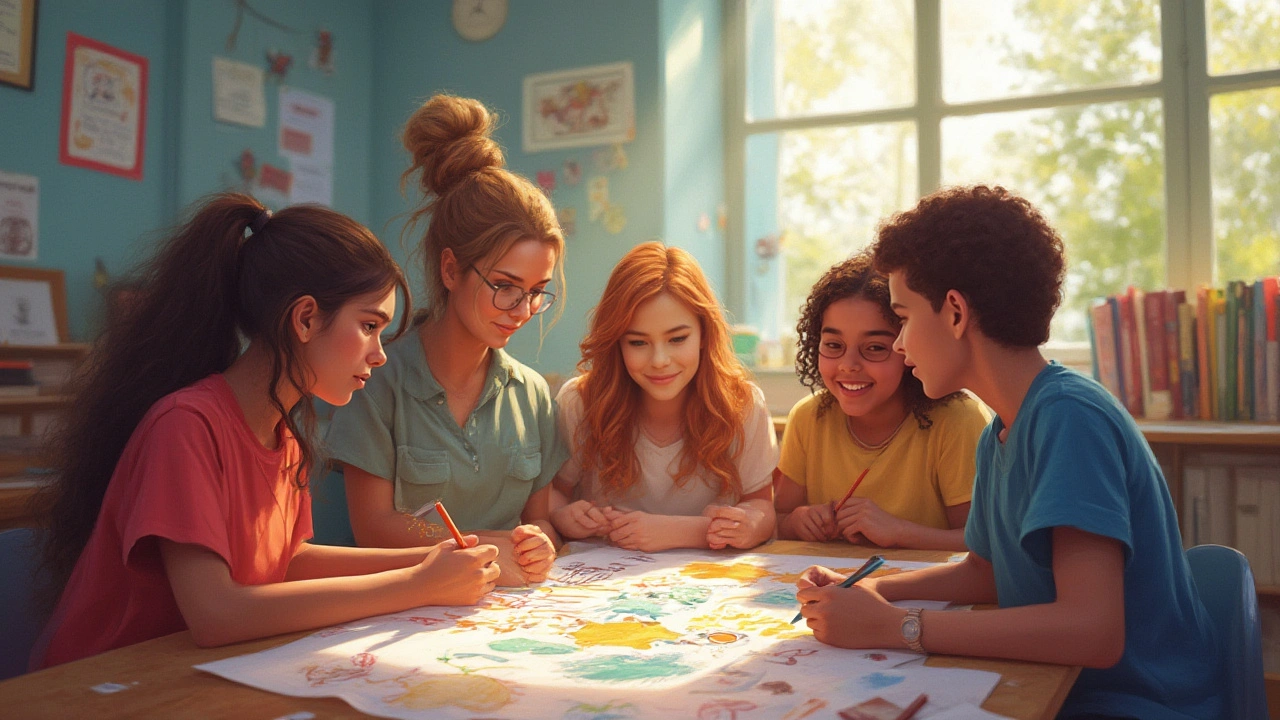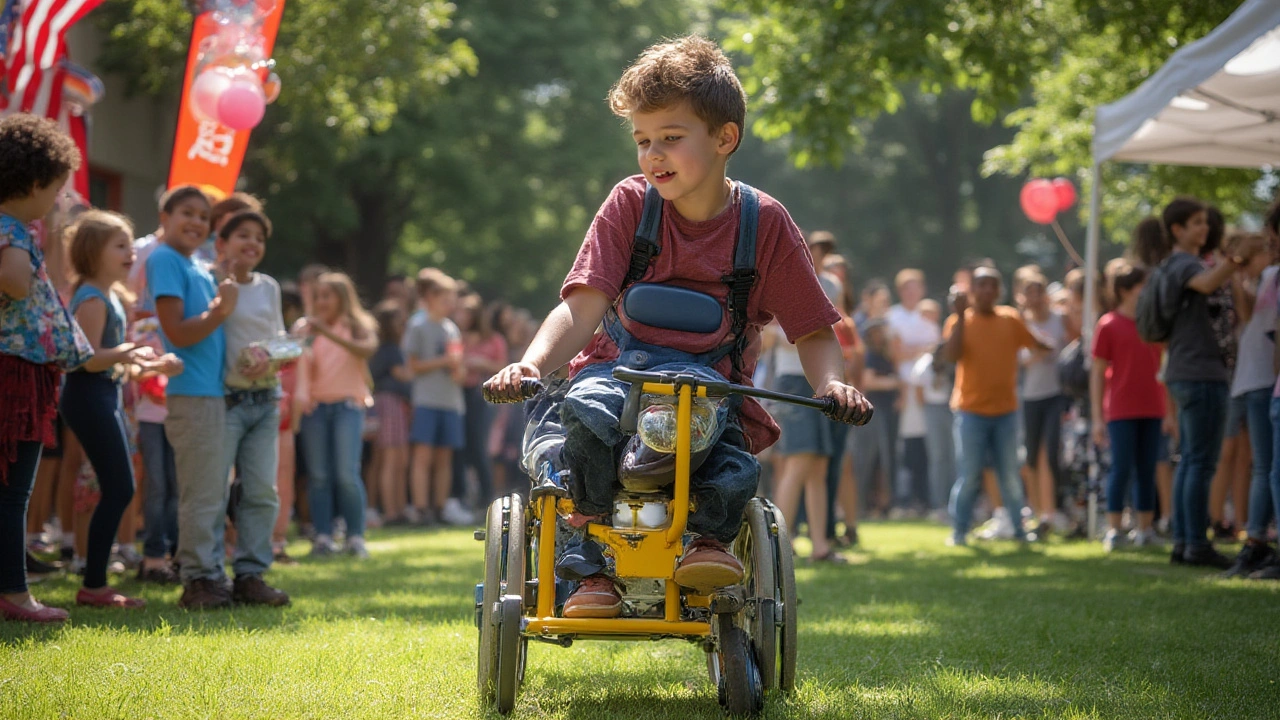 Jul, 10 2025
Jul, 10 2025
Imagine a classroom where kids really get what it means to live with a rare disease—not just in February for Rare Disease Day, but every month, every season. Sparked by my daughter Ione’s endless ‘why’ questions, I found myself wishing schools did more to make rare conditions part of normal conversation, not just a one-off event. Truth is, rare diseases affect more than 300 million people worldwide, and one in two is a child. Chances are, there’s someone right now, sitting in your school, managing something nobody else can see. So why not bring those stories to the surface? Schools have the power to turn compassion into action, with projects and lessons that go way beyond awareness ribbons.
Infusing Rare Disease Awareness into Everyday Curriculum
Rare diseases sound mysterious, but they’re all around us, hiding in plain sight. Yet textbooks rarely mention them. We can do so much better. Instead of squeezing rare disease talk into a single health class, teachers can thread it across subjects. In science, students could explore genetics by learning why certain diseases don’t follow the same rules as common colds or flu. English teachers could assign memoirs or stories written by young people who live with rare diseases. Even math offers a window: what does “rare” actually mean in numbers? If you want students to go deeper, let them crunch statistics or chart the worldwide prevalence of conditions like cystic fibrosis or Batten disease.
Kids love hands-on activities, and nothing beats a creative project for sparking curiosity. Try a ‘disease detective’ unit: students research a condition, then present not just the biology but the daily impact on kids their age—diet restrictions, wheelchair access, or what it’s like missing weeks of school for specialist visits. This isn’t just a science lesson; it’s a real-life empathy exercise. Want to tie in art? Have students design posters or create short videos telling the story of someone living with a rare disease, focusing on what makes them unique rather than their limitations.
Why not challenge your school’s debate team to discuss whether public spaces do enough to accommodate less visible disabilities? Or get music classes involved by exploring musicians who have performed while facing rare conditions themselves. Small tweaks to regular lessons keep these conversations alive all year instead of letting them gather dust after a February assembly.
Building Community: Students, Families, and Rare Disease Advocates
Let’s face it, students tune out when awareness feels abstract. Real people with real challenges turn those statistics into something memorable. Reach out to local support groups or rare disease foundations. Invite guest speakers—maybe a parent, another student, or even a medical professional—to share their personal stories. These connections stick with students far longer than any worksheet. When our school hosted a virtual Q&A with a teenager who relies on a ventilator, my daughter came home full of new questions (and inspired to start a lunchtime inclusivity club!)
For parents, regular school events can carve out space for learning and empathy. Host an annual ‘Invisible Illness’ day, where booths and posters let families hear directly from others about daily realities most never consider—like the anxiety of unpredictable flare-ups or the creativity required to navigate inaccessible field trips. Open up the library for special exhibits about rare disease research or biographies.
- Organize buddy programs that pair students with and without rare conditions for team projects.
- Hold a family book night dedicated to children’s books featuring characters living with rare diseases.
- Support after-school clubs that focus on advocacy, fundraising, or crafting care packages for local families in need.
Teachers, you don’t have to go it alone—many foundations offer brochures, activity plans, and even grant money to help schools jumpstart their rare disease education efforts. The Rare Disease Day site routinely posts resource packs timed around global awareness days, but you can use them any time.

Making Awareness Events Matter: Beyond the One-Day Approach
Some schools go big for rare diseases in February, then move on. But what about the rest of the year? Action counts more than a single themed dress-up day. Try linking awareness months to seasonal school programs. For example, September is muscular dystrophy awareness month, so science teachers can use that month to dig into muscles, genetics, and the daily hurdles families face—a straightforward entry point for the whole school. One practical guide to engaging activities is highlighted here: muscular dystrophy awareness.
Want something interactive? Set up empathy workshops where students navigate obstacle courses in wheelchairs, wear vision-limiting goggles, or try communicating without speaking. These simulations spark both laughter and insight—kids remember what it feels like to be the one facing unusual challenges.
Teachers can schedule monthly “Spotlight” mornings, where the class learns about a different rare disease through a child-friendly short film, a guest speaker, or a group project. Psychology or guidance counselors might coordinate a letter exchange with students at another school who live with rare diseases, making connections that span beyond one’s own zip code. Throw in some healthy competition with fundraising drives tied to milestones: every donation unlocks a new fact about rare conditions, or supports a local family’s medical expenses.
| Event/Activity | Month | School Engagement |
|---|---|---|
| Rare Disease Day | February | School-wide assemblies, awareness ribbons |
| Muscular Dystrophy Awareness Month | September | Science classes, art contests, community partnerships |
| CF Awareness Week | May | Peer education, poster campaigns, family speakers |
Notice a theme? The best events aren’t one-offs. They spark questions, encourage deeper dives, and inspire follow-up projects. By linking events and curriculum, schools make rare disease awareness a natural part of school life—just like book fairs or field days.
Long-Term Impact: Creating a Culture of Support and Action
Real learning sticks when it shifts school culture, not just classroom content. Students start asking bigger questions when they see rare diseases as part of their world, not just a subject to memorize. When my daughter’s class learned about metabolic disorders, suddenly allergy-safe bake sales and clearer lunchroom labeling didn’t seem so odd—they became obvious acts of support. Simple things, like teachers giving more time for assignments or friends double-checking field trip accessibility, show empathy in action, not just words.
Does this sound idealistic? For some schools, yes. But the most transformative shifts come from starting small. A monthly bulletin board with rare disease facts, a social media campaign run by students, or a rotating display of biographies in the library—these keep rare conditions visible and normalize difference. Over time, older students can mentor younger ones, making support and advocacy baked into the school’s identity.
Annual surveys—anonymous of course—help track whether students feel more understanding or better equipped to be allies. School staff might partner with nurses or local clinics to ensure policies actually reflect the needs of all students, not just the healthy majority. By creating this kind of inclusive ecosystem, even the quietest students know they matter, and every family sees their challenges reflected in the place where their child spends the most time outside home.
- Encourage student-led awareness projects during spirit weeks or open houses.
- Introduce year-round professional development for teachers, focusing on rare disease inclusion and support.
- Celebrate personal achievements—be it sports, arts, or academics—of students managing rare diseases.
It only takes a handful of small changes to move the dial from awareness to understanding. The real magic happens when rare diseases become woven into the fabric of daily school life—seen, heard, and respected. Being rare shouldn’t mean being invisible. Every school has the power to light the way.

Rekha Tiwari
July 16, 2025 AT 23:12Also, the 'disease detective' idea? YES. Kids remember stories way more than stats.
Andy Smith
July 17, 2025 AT 03:49Leah Beazy
July 18, 2025 AT 03:52Jenna Hobbs
July 18, 2025 AT 15:44Ophelia Q
July 18, 2025 AT 21:31Elliott Jackson
July 20, 2025 AT 18:25McKayla Carda
July 22, 2025 AT 07:50John Villamayor
July 23, 2025 AT 16:08Robert Gallagher
July 25, 2025 AT 01:07Howard Lee
July 26, 2025 AT 22:17Stacy Reed
July 28, 2025 AT 21:51Christopher Ramsbottom-Isherwood
July 28, 2025 AT 22:36